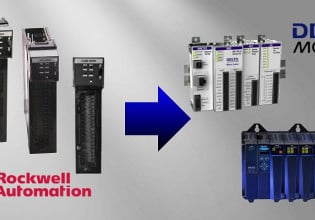Assessing Buzzwords: Digital Transformation
What does “digital transformation” really mean, and what are the technologies involved in the process? Further, which of these technologies are facilities adopting?
The computer revolution started with the founding of integrated circuits (IC) in the 1960s. The IC found its way into many industries over the last half-century. Today, there are various computing devices used in various sectors.
Initially, software used to be the facilitator to use the hardware-based computing solution. Later, software evolved to be the tool to leverage computing power to do more things efficiently. Today, using digital tools that combine hardware and software tools is critical for every industry in the world. Businesses bring in these new capabilities with digital transformation.
What is Digital Transformation?
The implementation of digital technology where it was not used earlier is called digital transformation. It can be construed as transforming businesses with the help of digital technologies. Today, it is harder to find industries not integrated with digital technologies.
![]()
Figure 1. A representation of digital transformation.
The recent shortage in new automobiles and the considerable appreciation of the prices of used vehicles is due to a semiconductor shortage. Modern-day vehicles use a large number of chips as components. Cars today are electronic devices as much as they are automobiles.
As digital technologies are becoming more widely utilized, let’s look at the technologies involved in digital transformation, specifically.
Technologies Involved in Digital Transformation
The technologies involved in digital transformation vary with each implementation. For each organization, it varies with the current technology implemented, future requirements, and budget constraints. It will depend upon the company’s stage of industrial transformation. Digital transformation is generally the move towards the concepts of industry 4.0.

Figure 2. An image showing how engineers can utilize ERP automation in their facility. Image used courtesy of Siemens
If a manufacturing facility has not implemented automation, this has to be done before digital transformation. A facility that still uses pen and paper to manage operations needs to implement appropriate digital solutions first. Implementing enterprise resource planning (ERP) or manufacturing information system (MIS) is the first priority. Instead of implementing on-premises solutions, the company can directly use cloud solutions.
Moving to concepts of industry 4.0 is a core aspect of digital transformation. The major technologies involved include the following.
- Internet of Things (IoT): IoT connects all devices and gadgets with the internet. In a plant facility, all the equipment and sensors are connected to the internet. The devices can also be controlled remotely over the internet.
- 5G/WiFi 6E connectivity: When all devices are connected to the internet and talk to each other, it has to be over a fast network. Fast network not only means network with high data transfer speeds. It also needs to have very low latency to enable faster communication. 5G cellular technology and WiFi 6E are cutting-edge network technologies used for digital transformation.
- Cloud computing: Organizations today do not have to build their own computing infrastructure. Large infrastructure service providers (IaaS) offer computing infrastructure on a pay-as-you-go basis. The advantage is that organizations can dynamically scale the required computing resources and pay only for what they use. The connection to the remote infrastructure is over the internet. All computational requirements are handled by cloud computing.
- Edge computing: Cloud computing has a slight lag due to the distance the data has to travel. Edge computing brings a small quantity of computing power to all the devices in the IoT ecosystem. This helps to make quick decisions and send only critical data to the cloud.
- Big data: A large number of IoT devices collect humungous volumes of data. This could be structured and unstructured data that could amount to terabytes of data every day from a single facility. Traditional analysis techniques applied to relational databases do not work. Big data analytics use the power of artificial intelligence (AI) and machine learning (ML) to generate insights from big data.
Along with these pillar technologies, the following technologies also are part of digital transformation.
- Collaborative robots (cobots)
- Predictive maintenance
- Digital twins
- Machine vision
- Flexible manufacturing systems
- Satellite communications, Bluetooth, mesh
- Lean manufacturing
- 3D scanning/printing
- Remote monitoring
Each year, EETech Media and Marketing (the parent company of Control Automation), conducts a survey among users across all EETech sites—divided generally into "career professionals" and "next-generation engineers." This year, EETech posed the question, "Which digital transformation technologies is your company adopting?" to better understand how industry leaders prioritize digital transformation.
The most common among the responses was “predictive maintenance.” More than 40% of the respondents are implementing predictive maintenance as part of their digital transformation journey. The next popular technology is artificial intelligence and machine learning. Cloud computing followed with a close third. The technologies mentioned by the respondents can be seen in figure 3.
.jpg)
Figure 3. Chart showing the respondents’ answers for EETech’s Global Engineering Survey 2021.
Digital Transformation: Challenges
Digital transformations come with a set of challenges. Some of the challenges are mentioned below.
- Evolving needs: The requirement of businesses evolve. Customer needs change constantly. Newer technologies are rolled out every day. The digital transformation process cannot accommodate all these changes. Organizations have to choose a boundary and stick with it.
- Inertia: The major challenge for any change in an organization is the inertia in the organization. Digital transformation will overhaul how things happen in a facility. Employees and management may resist the change to continue with the existing way of doing things, which may make implementing any change difficult, let alone digital transformation.
- Capital needs: Digital transformation needs capital to implement. There will be upfront capital expenditure and ongoing subscription expenses for digital infrastructure. This could deter organizations without a strong balance sheet.
- Skilled employees: There is limited manpower that can handle the large-scale digital transformation of an organization. This is a major challenge in the path to the digital transformation of an organization.
- Cybersecurity: Digital technology in a facility may make it easier for malicious actors to disrupt operations. A cyberattack could be conducted without physical access to the facility. This is a major challenge for any organization undertaking digital transformation.
Industry Trends
The push to digital transformation is quite evident. Industries large and small across sectors are digitally transforming their businesses. Government-mandated lockdown for coronavirus forced businesses to rethink how they handle operations. They have started to embrace digital technology to be agile in the face of any crisis.
As digital transformation trends continue to grow with technology adoption, industry 4.0 will heat its peak. Or, has it already hit its peak, and are we in the midst of industry 5.0? Stay tuned for more “assessing buzzwords.”
Learn More About:
- IIoT
- industrial IoT
- AI
- cloud computing
- Industry 4.0
- digital twinning
- infrastructure
- cobots
- collaborative robots
- machine vision
- predictive maintenance
- 3D printing
- machine learning
- digital transformation
- edge computing
- 5G
- remote monitoring
- ERP
- lean manufacturing
- Big Data
- X as a Service
- XaaS
- trends
- buzzwords






